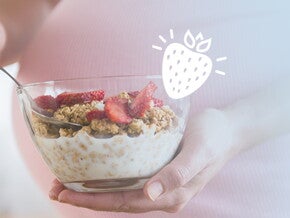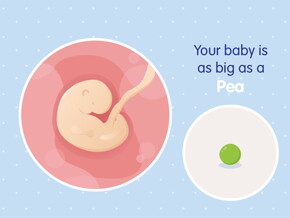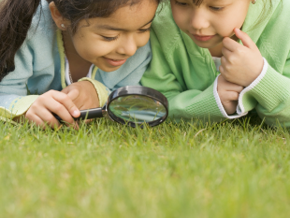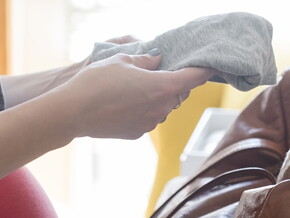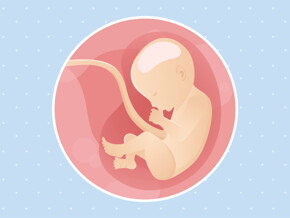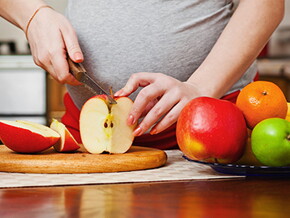
Feeding Milestones – Count Every Victory!
This age is an exciting time of development for your baby. She’s learning lots of new feeding skills and becoming more independent by the day. Here’s how you can help her learn to eat and drink, and to grow in confidence, as she embarks on a new chapter in her feeding adventures.
Adventure #1: ENJOYING NEW TEXTURES
Setting the scene: Teeth arrive at different times for different babies, so don’t worry if she isn’t showing off her pearly whites just yet. As her teeth start to come through, she’ll gradually move from gumming food to chewing it.
Be her guide: There’s no need to wait for your baby’s teeth to appear before offering lumpy or soft foods – she’ll use her hard gums to mash it up. As with new tastes and flavors, you may need to offer your baby new textures several times before she decides she likes them. You could start by offering your baby a thick puree with pieces of soft-cooked vegetables in it. The puree won’t separate from the pieces, and will move as a whole around her mouth, so she won’t have to deal with too many bits of food in her mouth at one time. Thickly mashed food lets your baby practice moving food around her mouth in an up-and-down, forward-and-back motion to prepare for swallowing. Offering finger foods? Make sure they are diced small, easy to pick up, and soft or able to dissolve in your baby’s mouth.
Happy ending: Fork-mashed baby food teaches your baby how to use her lips to wipe food from a spoon.

Adventure #2: FINDING FOCUS
Setting the scene: Your baby may get distracted easily and take more interest in your food than in her own.
Be her guide: Patience is the key here. It can be frustrating but this is normal behavior for babies of this age. Be patient and understanding as she tries new foods and learns to self-feed, and don’t rush or pressure her to eat more. Encourage her to copy you by eating the same healthy foods at the table. Make mealtimes fun by talking, singing, and smiling with her. Limit distractions so she can focus on feeding. Move toys or other items off the table, turn off the television, and don’t bring phones or tablets to the table.
Happy ending: By introducing her to eating in this way you will encourage your baby to become a willing participant in family mealtimes.

Adventure #3: PICKING UP FOODS
Setting the scene: You may notice your baby is moving on from grabbing food with her whole hand to picking it up between her thumb and index finger. This is called the pincer grip and she may enjoy practicing this new approach to getting foods into her mouth, by herself.
Be her guide: Ignore the mess and let her play with her food and explore it through touch. You’ll probably find more food will end up on her face, the floor, and the highchair than in her mouth, but don’t worry. This is how she learns to feed herself!
Happy ending: Mastering the pincer grip will lead to her beginning to use a spoon. It may even make it into her mouth sometimes! She also may enjoy using this new-found skill to feed herself.

Adventure #4: STARTING TO FEED HERSELF
Setting the scene: Your baby will show you signs when she is ready to start feeding herself. Look out for her playing with a spoon and bringing it towards her mouth. She may also start mashing food with her jaw. Holding an open cup by herself or trying to pick up food with a pincer grip are other signs that she is ready.
Be her guide: Consider using two spoons when teaching your baby how to feed herself – one for each of you so she can follow your lead. Choose spoons with big, soft-textured handles for an easy grip, and never use disposable plastic that can break. Remember that snacks are important too, and another chance to practice new feeding skills. Aim to offer your baby three meals and two snacks each day. She needs frequent offerings of food because of her small tummy.
Happy ending: It may feel a long way off now, but your baby is taking important first steps to becoming an independent eater.

Adventure #5: TELLING YOU WHEN SHE’S FULL
Setting the scene: Your baby is born with instincts to recognize when she’s hungry or when she’s had enough food. She will decide whether and how much to eat.
Be her guide: As a parent, it’s your job to offer a variety of healthy foods to your baby throughout the day as meals and snacks. It’s her job to decide if she’s going to eat them, and how much she will eat. Never force your baby to eat a certain food or finish what you’ve put on her plate or in her bowl. Pay attention to her hunger and fullness cues.
Happy ending: Research has revealed that babies whose parents respond to their signs of hunger and fullness appropriately are more likely to stay at a healthy weight as they grow up.

Adventure #6: FLEXING HER TONGUE MUSCLES
Setting the scene: Your baby’s tongue is getting a workout as she eats. It moves from side to side to push food onto her gums for mashing.
Be her guide: If you’re buying baby food from a store, look out for varieties specially created for this stage of complementary feeding. They contain lumpy bits and have a thick texture so she can feel it in her mouth, but doesn’t need to chew too much.
Happy ending: As your baby eats, she’s exercising muscles in her mouth that are important for future eating.

Adventure #7: DRINKING FROM A CUP
Setting the scene: At eight to 10 months of age babies are eager to learn new skills, making this the perfect time to help her learn to drink from a cup.
Be her guide: Babies love to imitate, so show her how it’s done. Hold an open cup with two hands and bring it to your mouth to drink. Hand her an empty plastic cup so she can play, explore, and practice holding it. You’ll have to do the holding and tipping for now – she’s in it for the exploration! Encourage her to copy you and praise her if she tries. Choose a sturdy cup that’s the same size and width as her little hands to help her with the grasp. An open cup, rather than one with a valve or spout, will work her mouth muscles and help her hone her drinking skills. If your baby needs a snack or drink of water during playtime at home, take a break, and sit her at the family dinner table. You can both go back to playing when she’s finished.
Happy ending: At first your baby might try to seal her lips around the rim of the cup. With practice, she’ll learn how a cup functions.

Sources
Black MM, Aboud FE. Responsive feeding is embedded in a theoretical framework of responsive parenting. J Nutr 2011; 141(3): 490-4.
Caton SJ, Blundell P, Ahern SM et al. Learning to eat vegetables in early life: the role of timing, age and individual eating traits. PLoS One 2014; 9(5):e97609.
Mura Paroche M, Caton SJ, Vereijken C et al. How infants and young children learn about food: A systematic review. Front Psychol 2017;
8:doi.10.3389/psyg.2017.01046.
Nicklaus S. Complementary feeding strategies to facilitate acceptance of fruits and vegetables: A narrative review of the literature. Int J Environ Res Public Health 2016; 13(11):1160; doi: 10.3390/ijerph13111160.


